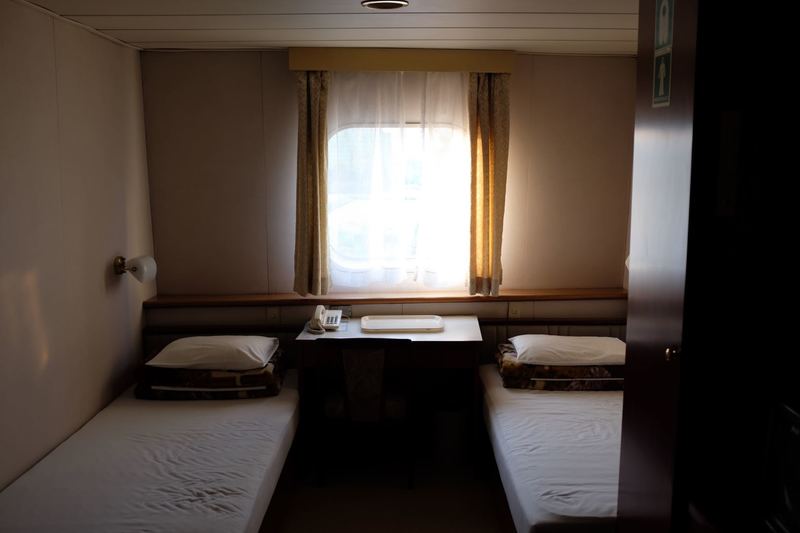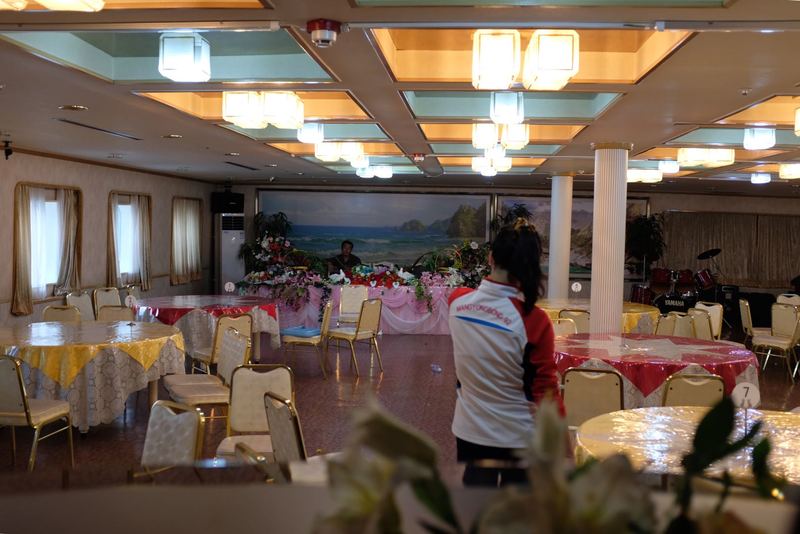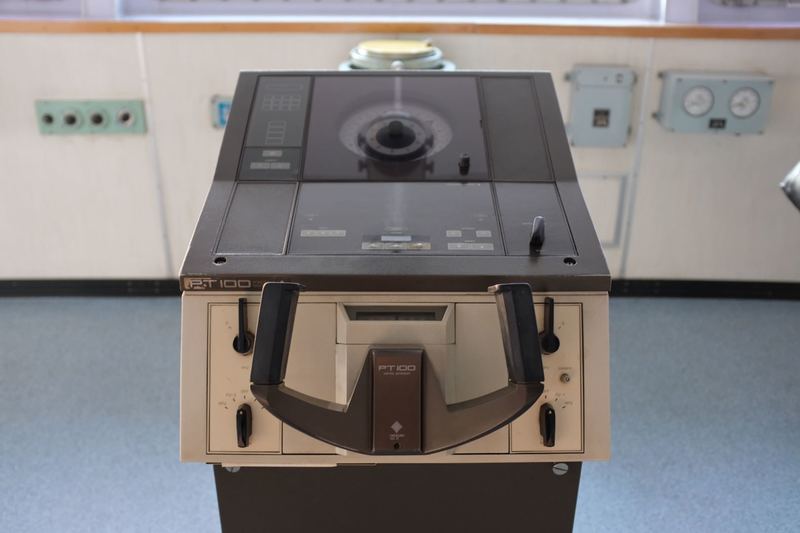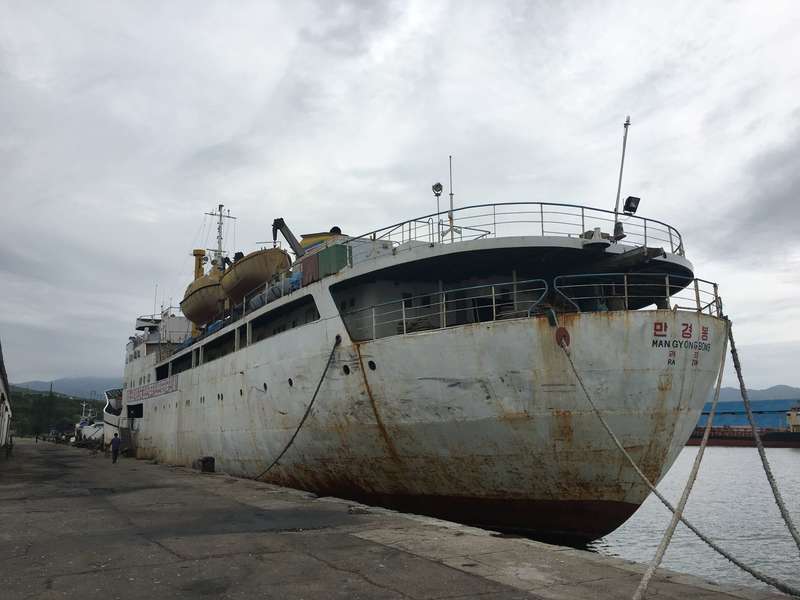Mangyongbong-92
Introduction
Location
Visiting
Cost
Tips
Mangyongbong-92 History
Principal Particulars
Introduction
Launched in 1992, the Mangyongbong-92 is North Korea’s large size cargo-passenger ship.
It was built in Hamhung and funded by Chongryon, the North Korean Japanese citizens association.
It originally sailed between North Korea and Japan moving people, cargo and vehicles.
In 2006 in response to a series of missile launches by North Korea, the Mangyongbong-92 was permanently banned from Japanese waters. It has undertaken limited services since then.

Location
It is berthed at the docks in Wonsan in the centre of the city, near the Songdowon Hotel and Dongmyong Hotel.

Visiting
It is possible to visit the Mangyongbong-92 to take a tour of the ship or stop by for dinner or even a drink.
Tours of the Mangyongbong-92 include the various levels of accommodation on board, the ship’s facilities (such as its restaurant, bar, shop and sauna), the external decks, lifeboats and the all-important bridge of the ship.
Despite spending most of its days berthed in Wonsan, it is a popular place with locals and seems to always be a hive of activity.

Cost
The cost is 2 EUR per person to visit, plus the cost of drinks and food if you want to stick around and enjoy life on board the ship.

Tips
- The Mangyongbong-92 does bob around with the waves & tide, so do take care when getting on and off the ship as it only has a rather simple ramp.
- If looking for a special Mangyongbong-92 souvenir, ask your guides if you can visit the bookshop at the Songdowon Hotel. There is a pictorial book available on the ship and this is the main place you will be able to find it.
- If you are looking at a private tour and you would like to have dinner on board the Mangyongbong-92 then do ensure to let your Tour Manager know so it can be arranged ahead of time.

Mangyongbong-92 History
- The Mangyongbong-92 was built to replace its namesake ship, the Mangyongbong. The Mangyongbong was built in 1971 and also sailed between North Korea and Japan. The original Mangyongbong still survives today and can be found moored in Rajin Port, in the Rason Free Trade Area (picture below!).
- The name 'Mangyongbong' in Korean means 'peak of a thousand views' which is an apprppriate name for a ship. The '92' is simply the year the ship was launched, and to differentiate it from the original Mangyongbong ship.
- There have been multiple attempts to use the Mangyongbong-92 since 2006 for tourism including between Rason in the northeast and Mt Kumgang which it trialled in 2011 to a boatload of media, travel agents and North Korean officials. This cruise received poor reviews and to top it all off, it has been said the ship took out part of the dock at Mt Kumgang.
- In 2013 it was thought North Korea was replacing the Mangyongbong-92 with a Singaporean-owned Soviet-built cruise ship called the Royale Star. What actually happened was the owner of the Royale Star wanted to operate gambling cruises for tourists from Rason in North Korea out into international waters which they did do several times before deciding to end their venture, and the Royale Star left for more prosperous waters.
- In 2018 the Mangyongbong-92 was used to transport 150 members of the North Korean delegation for the Pyeongchang Winter Olympics. It travelled from Wonsan to the South Korean port of Mukho and was the first time in 16 years a North Korean ship had docked in South Korea.
The original Mangyongbong moored in Rason
Principal Particulars
- Overall Length – 126.13 metres
- Length between perpendiculars – 114.00 metres
- Breadth – 20.40 metres
- Depth – 12.60 metres up to upper deck / 7.50 metres up to main deck
- Draft – 5.65 metres
- Displacement – 7,130 tonnes
- Deadweight – approx. 1,000 tonnes
- Fuel oil tank capacity – A heavy oil approx. 261.6 cubic metres / C heavy oil approx. 501.1 cubic metres
- Fresh water capacity – approx. 637 cubic metres
- Ballast tank capacity – 938.4 cubic metres
- Main engines – 12PC 2-5V x2 units, 7,800PS/520rpm, 5,739.5kw
- Auxiliary engines 1 – Z280L-ST x1 set, 1,800PS/720rpm, 1,200kw
- Auxiliary engines 2 – M200AL-EN x 2 sets, 900PS/900rpm, 600kw
- Emergency generator – 6HAL-TH x1 set, 240PS/1,800rpm, 160kw
- Boilers – 1.79t/h x2 units
- Loaded service speed – 21 knots (37.08 km/h)
- Ballasted trial speed – 23 knots (40.79 km/h)
- Passengers – 45 complemented, 36 service personnel, 218 passengers (299 persons in total)
- Passenger Cabins – 49
- Staterooms – 3 single berth cabins, 3 double berth cabins
- First class – 1 single berth cabin, 22 double berth cabins
- Second class – 2 double berth cabins, 14 five-berth cabins
- Third class – 2 twenty berth cabins, 2 twenty-five berth cabins
- Gross tonnage – GT 9339 (registered tonnage)


Interested in a tour to North Korea?
Travel to North Korea with the only
North Korea travel experts, Koryo Tours
North Korea Travel Guide PDF | Sign up to the mailing list | About Koryo Tours
